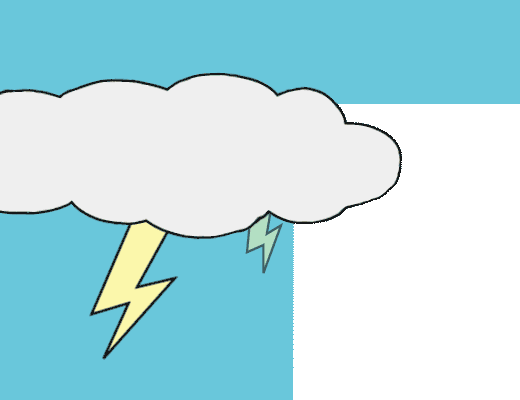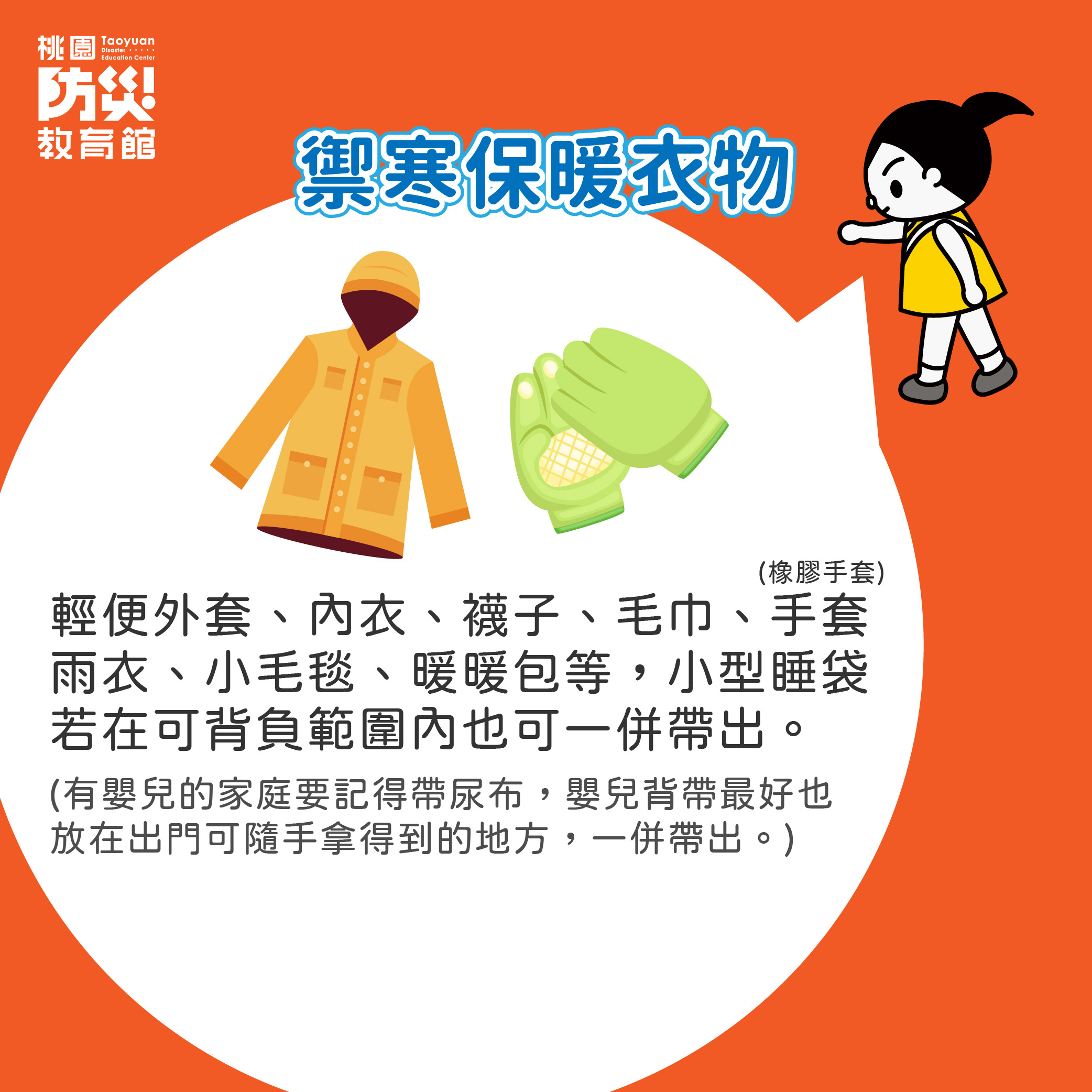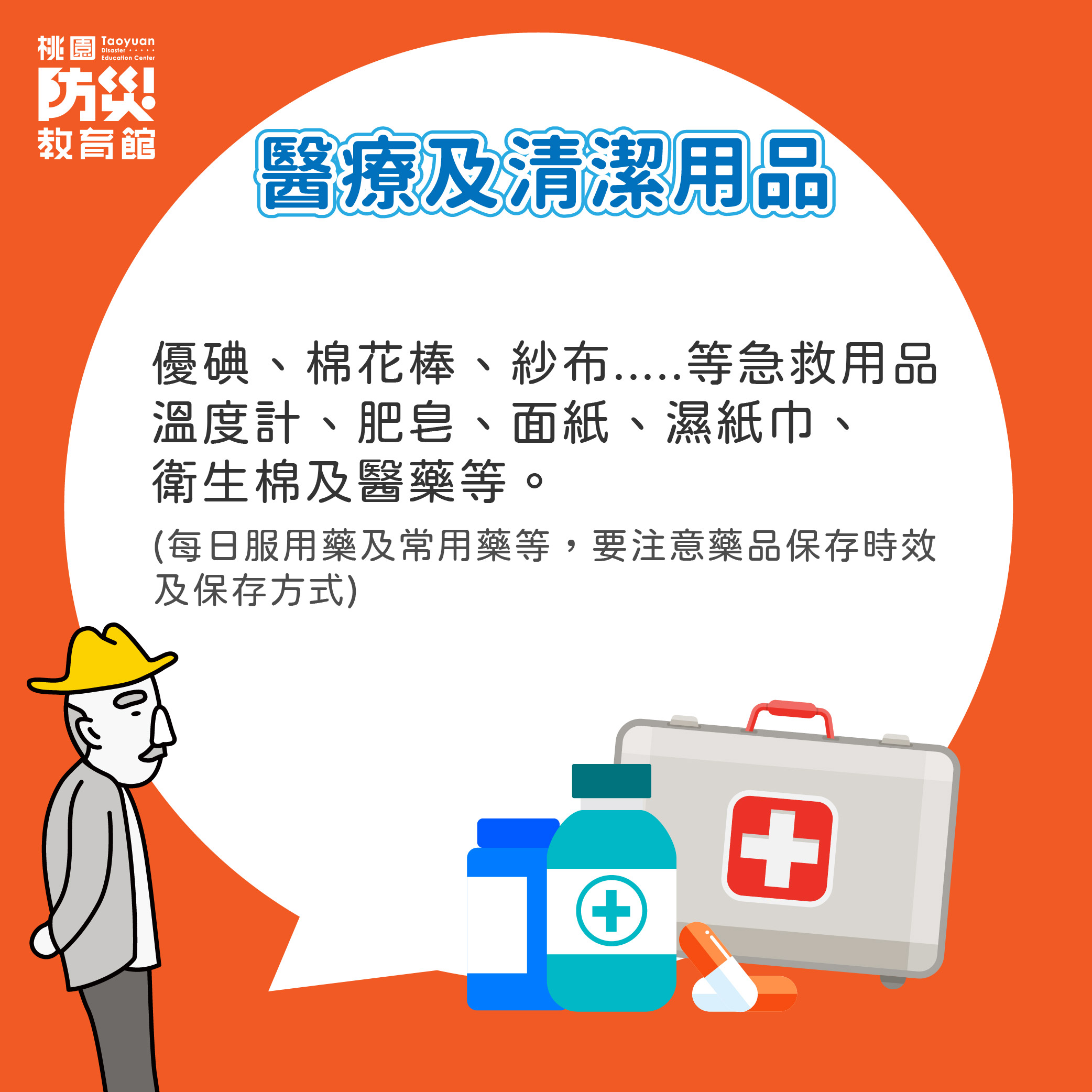Prepare Emergency Kits
Emergency kits (bug-out bags)should be placed in an easy-to-reach place in the home and work place. Thenecessary content of the emergency kit should be checked and updated at leastonce every six months.
- Emergency ration:
Prepare enough food for three days: Emergency food supply, drybiscuits/crackers, and 3 liters of bottled drinking water.
For families with babies: babyformula, baby food, and milk bottle.
- Warm clothing:
Light jacket, underwear, socks,towel, gloves (rubber gloves), raincoat, wool blanket, heating pack, smallsleeping bag can be brought if not too much of a burden.
Families with babies: take diapersand baby carrier if not too much of aburden.
- Medical and cleaning supplies:
Povidone-iodine,cotton swabs, and gauze for emergency first aid; thermometer, soap, tissues,wet tissues, sanitary pads, and medicine (daily medicine and often usedmedicine; be sure to pay close attention to the expiration dates and thestorage requirements of medicine in the emergency kit).
- Precious items:
Copies ofID, insurance card, and bank passbook; copies of other important legaldocuments; and some pocket money.
- Other items:
For example: whistle, disaster map(can be downloaded from the National Fire Agency [Ministry of the Interior],special municipality, or county (city) government website), portable radio,flashlight, batteries, lighter, folding knife and multitool, canopener, pen/pencil and paper, rope, etc.
A well-prepared emergency kit meansthat when an emergency occurs, your family will be prepared and will not needto worry about necessary supplies. Being prepared can allow you to betterprotect yourself and keep your family safe.















 33448 No. 35, Aly. 49, Ln. 901, Sec. 2, Jieshou Rd., Bade Dist., Taoyuan City 334007, Taiwan (R.O.C.)
33448 No. 35, Aly. 49, Ln. 901, Sec. 2, Jieshou Rd., Bade Dist., Taoyuan City 334007, Taiwan (R.O.C.)
 Tuesday - Saturday |09:00 - 12:00;13:30 - 16:30
Tuesday - Saturday |09:00 - 12:00;13:30 - 16:30
 (03)365-5119
(03)365-5119





